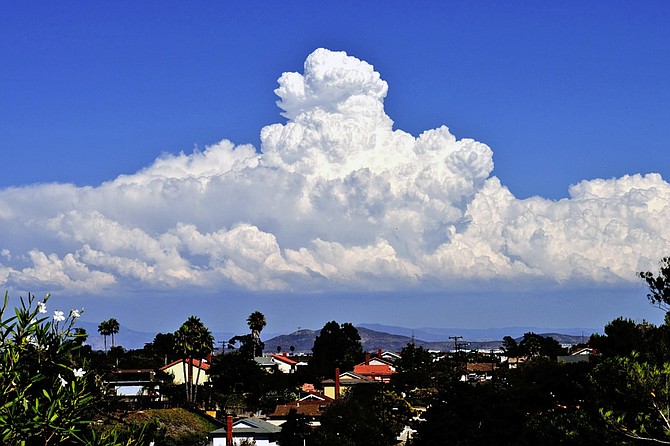 Facebook
Facebook
 X
X
 Instagram
Instagram
 TikTok
TikTok
 Youtube
Youtube

Cumulonimbus Clouds, or thunderheads, are most likely to form over San Diego County’s deserts and mountains during the latter part of the summer season, beginning in late July. The clouds appear by mid-afternoon — often the result of moist, tropical air entering the county from the south or southeast. If intense, these cloud buildups are accompanied by enough rain to flood the desert washes and mountain drainages. When the weather pattern allows the movement of moist air beyond the mountain barriers, even coastal San Diego County can experience the cool spatter of raindrops and spectacular evening lightning displays.

If You’re Looking To Add A Little Seasonal Color to your garden, California native bulbs are a great solution. Plant your bulbs in the late fall, 3-6 inches deep, right after the first fall rain. They’ll pop up after the rains end when the soil begins to warm, flower into the summer, and then disappear again. Then they will return year after year, so there is no need to re-plant every year. Plant them in full to partial sun and don’t water them through the summer and fall; bulbs will often rot with summer waterings. Because bulbs are invisible for 6 months of the year, its best to plant them amongst existing plants so when the bulbs are dormant you’ll still have something to look at in that part of your yard. There are many bulbs that thrive in Southern California, but some California native bulbs to try are Meadow Onion (Allium unifolium), Ithuriel’s Spear (Triteleia laxa), and Prettyface(Triteleia ixioides).
July Is San Diego’s Driest Month, according to precipitation data compiled since the year 1850. Only four hundredths of an inch of rain fall on average this month, compared to almost two inches in January, the wettest month. July also marks the beginning of a new rainfall year, as defined by local meteorological convention.


Cumulonimbus Clouds, or thunderheads, are most likely to form over San Diego County’s deserts and mountains during the latter part of the summer season, beginning in late July. The clouds appear by mid-afternoon — often the result of moist, tropical air entering the county from the south or southeast. If intense, these cloud buildups are accompanied by enough rain to flood the desert washes and mountain drainages. When the weather pattern allows the movement of moist air beyond the mountain barriers, even coastal San Diego County can experience the cool spatter of raindrops and spectacular evening lightning displays.

If You’re Looking To Add A Little Seasonal Color to your garden, California native bulbs are a great solution. Plant your bulbs in the late fall, 3-6 inches deep, right after the first fall rain. They’ll pop up after the rains end when the soil begins to warm, flower into the summer, and then disappear again. Then they will return year after year, so there is no need to re-plant every year. Plant them in full to partial sun and don’t water them through the summer and fall; bulbs will often rot with summer waterings. Because bulbs are invisible for 6 months of the year, its best to plant them amongst existing plants so when the bulbs are dormant you’ll still have something to look at in that part of your yard. There are many bulbs that thrive in Southern California, but some California native bulbs to try are Meadow Onion (Allium unifolium), Ithuriel’s Spear (Triteleia laxa), and Prettyface(Triteleia ixioides).
July Is San Diego’s Driest Month, according to precipitation data compiled since the year 1850. Only four hundredths of an inch of rain fall on average this month, compared to almost two inches in January, the wettest month. July also marks the beginning of a new rainfall year, as defined by local meteorological convention.
Comments